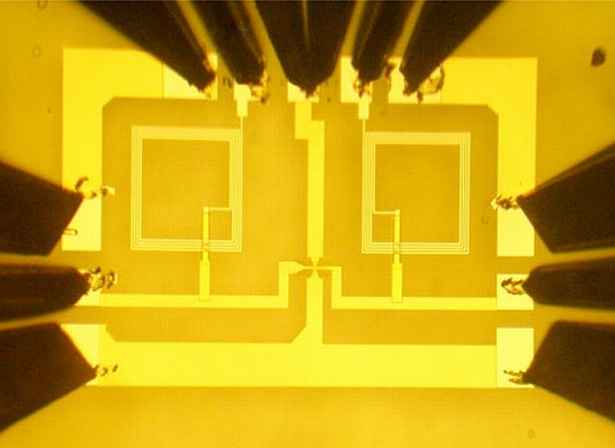IBM develops first integrated circuit built with graphene transistors

A lot of talk has been surrounding graphene, an allotrope of carbon that takes the form of single-atom-thick sheets of bonded carbon atoms in a honeycomb lattice, ever since it was isolated in 2004. Hailed as one of the holy grails of modern size, graphene promised plenty of potential applications, from anti-bacterial bandages to flexible displays to replacing the very silicon in computing. Almost none of the developments with this wondrous substance have made their way to market so far, and new sceptics have appeared amongst the dissenters, doubting if graphene would ever live up to its potential.
In the meanwhile, researchers over at one of graphene’s biggest proponents, IBM, have gone ahead and developed an integrated circuit (IC) based on a graphene transistor, a first in the field. While many graphene based transistors have been built in the recent past, IBM’s latest development marks the first actual application or proof-of-concept of that research, by building a functional integrated circuit – a relatively simple broadband radio-frequency mixer.
The IC wafer is built out of silicon carbide, and features field-effect transistors (FETs) made of graphene, as well as traditional inductors and metallic structures. Integrating the graphene FETs with the traditional components was the biggest engineering challenge according to the IBM team, for two major reasons – graphene, a layer of carbon just a single atom thick, can be damaged easily in the process of etching a semi-conductor; and, conventional component metals do not adhere to graphene easily. Solving these problems took over a year, with etching problem circumvented by coating the graphene with a polymer, making it resistant to stray particles during electron beam lithography etching process.
[RELATED_ARTICLE]
For now, the IBM graphene-based IC operates at 10GHz, but the team insists this is not even close to the theoretical limit of the material, which should easily exceed silicon-based transistors by several orders of magnitude. Another great development observed about the graphene IC designed by IBM was its wide operating temperature range, resulting in very steady performance at temperatures anywhere between 27 °C to 127 °C. This heat-tolerant feature of graphene-based transistors could open up the door of chip-designing and manufacturing, as it would require less complex designs and expensive manufacturing processes.
While IBM’s development has certainly paved the next few steps down the still murky path of graphene replacing silicon for our computing needs, and has already begun on newer IC designs and improvements, it will be several years before consumers get their hands on graphene based computers. Rest assured however, with the rate at which the field of chip-design is progressing, cheap, efficient, and extremely fast processors aren’t too far around the corner, even if for now, they are little more than the wet dreams of geeks everywhere.
Image: AAAS/Science

